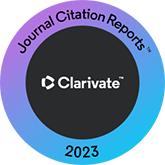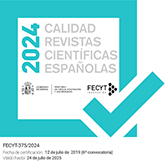Using Oralstats for prosodic characterisation of speakers in different discourse genres
DOI:
https://doi.org/10.3989/loquens.2021.079Keywords:
idiolect, discourse genre, prosody, OralstatsAbstract
This paper presents the prosodic and morphosyntactic analysis of 437 intonational phrases, 2777 words and 12520 phones registered from the speech of four Spanish politicians in four different discourse genres (TV gathering, press conference, political rally and interview). Based on methods from forensic linguistics, sociolinguistics, phonetics and computational linguistics, a set of R scripts called Oralstats has been developed, which allows to carry out a multivariate, dynamic and interactive analysis of acoustic and textual data aligned with PRAAT. By doing so, a new computational approach is suggested for finding individual forensic marks, combining both phonetic and linguistic factors, such as lexical or morphosyntactic values. Data exploration comes from the visualization of prosodic and morphosyntactic variables collected through decision trees, heatmaps and boxplots. The results show how speakers behave in a significantly similar way when it comes to differentiating themselves by genre; however, in confrontational genres some unexpected phonic marks were found, such as low intensity or low pitch, (the expected behavior being the opposite), thus enabling us to single out some of the speakers.
Downloads
References
Berez, A. L. (2011). Prosody as a genre- distinguishing feature in ahtna: A quantitative approach. Functions of Language, 18(2), 210-236. https://doi.org/10.1075/fol.18.2.03ber
Biber, D. y Conrad, S. (2009). Register, Genre, and Style. Cambridge: Cambridge University Press. https://doi.org/10.1017/CBO9780511814358
Bloch, B. (1948). A set of postulates for phonemic analysis. Language, 24(1), 3. https://doi.org/10.2307/410284
Boersma, P. y Weenink, D. (2021). PRAAT (Version 6.1.53) [Computer software]. http://www.praat.org/
Briz, A. (2019). Español coloquial. En E. Ridruejo (Ed.), Manual de lingüística española (pp. 614- 637). Berlín: De Gruyter. https://doi.org/10.1515/9783110362084-023
Briz, A. y Albelda, M. (2013). Una propuesta teórica y metodológica para el análisis de la atenuación lingüística en español y portugués. La base de un proyecto común (ES.POR.ATENUACIón). Onomázein. Revista de Lingüística, Filología y Traducción, 28, 288-319. https://doi.org/10.7764/onomazein.28.21
Cabedo, A. (2007). Caracterización prosódica del estilo directo de habla en la conversación coloquial. Estudios de Lingüística de la Universidad de Alicante, 21, 53-64. https://doi.org/10.14198/ELUA2007.21.04
Cabedo, A. (2009). La segmentación prosódica en español coloquial. Valencia: Quaderns de Filologia de la Universidad de Valencia.
Cabedo, A. (2011). Hacia un modelo predictivo para la segmentación prosódica del discurso oral coloquial: MESTEL (Modelo Estadístico para la selección de Términos Entonativos Ligados). Oralia: Análisis del discurso oral, 14, 85-104. https://doi.org/10.25115/oralia.v14i.8077
Cabedo, A. (2018). Atenuación con disminución prosódica significativa en géneros con distinto grado de planificación discursiva. Spanish in Context, 15(2), 219-237. https://doi.org/10.1075/sic.00012.cab
Cabedo, A. (2021). Oralstats. A tool to visualize and explore transcriptions and phonic data. https://github.com/acabedo/oralstats
Caelen-Haumont, G. (1993). Procesos cognitivos y adaptación de la codificación prosódica de los hablantes a las condiciones del discurso. Cognitiva, 5(2), 133-152.
Calvi, M. V. (2010). Los géneros discursivos en la lengua del turismo: Una propuesta de clasificación. Ibérica: Revista de la Asociación Europea de Lenguas para Fines Específicos (AELFE), 19, 9-32.
Cantero Serena, F. J., y Font Rotchés, D. (2009). Protocolo para el análisis melódico del habla. Estudios de Fonética Experimental, XVIII, 17-32.
Chaski, C. E. (2012). Author identification in the forensic setting. En L. M. Solan y P. M. Tiersma (Eds.), The Oxford Handbook of Language and Law. Oxford: Oxford University Press. https://doi.org/10.1093/oxfordhb/9780199572120.013.0036
Cicres i Bosch, J. (2011). Transcripció i autenticació de gravacions en contextos judicials. Llengua, Societat i Comunicació: Revista de Sociolingüística de La Universitat de Barcelona, 9, 26-32.
Cicres i Bosch, J. (2014). Comparación forense de voces mediante el análisis multidimensional de las pausas llenas. Revista Signos: Estudios de Lingüística, 86, 365-384. https://doi.org/10.4067/S0718-09342014000300002
Coulthard, M. (Ed.) (2013). Advances in Spoken Discourse Analysis. Londres: Routledge. https://doi.org/10.4324/9780203200063
Coulthard, M. y C. N. Condlin (Eds.) (2014). An Introduction to Discourse Analysis. Londres: Routledge. https://doi.org/10.4324/9781315835884
Coulthard, M. (2007). An Introduction to Forensic Linguistics. Londres: Routledge. https://doi.org/10.4324/9780203969717
Coulthard, M., Grant, T. y Kredens, K. (2011). Forensic linguistics. In R. Wodak, B. Johnstone y P. E. Kerswill (Eds.), The SAGE Handbook of Sociolinguistics (pp. 529-544). Londres: SAGE Publications Ltd. https://doi.org/10.4135/9781446200957.n36
Coulthard, M. y Johnson, A. (2010). The Routledge Handbook of Forensic Linguistics. Londres: Routledge. https://doi.org/10.4324/9780203855607
De la Mota, C., y Rodero, E. (2010). La demarcación entonativa y el énfasis en la locución de los editores de boletines informativos radiofónicos. En Sociedad Española de Lingüística (Ed.), XXXIX Simposio Internacional de la Sociedad Española de Lingüística (pp. 1-69). https://dialnet.unirioja.es/servlet/articulo?codigo=5412029
Degand, L. y Simon, A. C. (2009). Mapping prosody and syntax as discourse strategies: How basic discourse units vary across genres. En D. Barth-Weingarten, N. Dehé y A. Wichmann (Eds.). Where Prosody Meets Pragmatics (pp. 79-105). Leiden: Brill. https://doi.org/10.1163/9789004253223_005
Elvira-García, W., Roseano, P., Fernández Planas, A. M. y Martínez Celdrán, E. (2016). A tool for automatic transcription of intonation: Eti-ToBI a ToBI transcriber for Spanish and Catalan. Language Resources and Evaluation, 50(4), 767-792. https://doi.org/10.1007/s10579-015-9320-9
Espinosa, G. E., y Dabrowski, A. E. (2019). ¿La práctica discursiva condiciona la prosodia? Evidencia de una conferencia y una entrevista del español rioplatense. Repositorio Digital Institucional, Universidad Nacional del Comahue. http://rdi.uncoma.edu.ar//handle/123456789/15781
Estellés, M., y Albelda, M. (2014). Evidentials, politeness and prosody in Spanish: A corpus analysis. Journal of Politeness Research: Language, Behaviour, Culture, XXX(1), 29-62. https://doi.org/10.1515/pr-2014-0003
Grant, T. (2008). Approaching questions in forensic authorship analysis. En J. Gibbons y M. T. Turell (Eds.), Dimensions of Forensic Linguistics (pp. 215-229). Ámsterdam: John Benjamins. https://doi.org/10.1075/aals.5.15gra
Grant, T. y Baker, K. (2001). Identifying reliable, valid markers of authorship: A response to Chaski. Forensic Linguistics, 8(1), 66-79. https://doi.org/10.1558/sll.2001.8.1.66 https://doi.org/10.1558/sll.2001.8.1.66
Gries, S. (2019). On classification trees and random forests in corpus linguistics: Some words of caution and suggestions for improvement. Corpus Linguistics and Lingustic Theory, 16, 617-647. https://doi.org/10.1515/cllt-2018-0078
Guy, G. R. (2011). Language, social class, and status. En R. Mesthrie (Ed.) The Cambridge Handbook of Sociolinguistics (pp. 159-185). Cambridge: Cambridge University Press. https://doi.org/10.1017/CBO9780511997068.015
Hazen, K. (2007). The study of variation in historical perspective. En R. Bayley y C. Lucas (Eds.), Sociolinguistic Variation (pp. 70-89). Cambridge: Cambridge University Press. https://doi.org/10.1017/CBO9780511619496.005
Hidalgo, A. (2019). Sistema y uso de la entonación en español hablado. Santiago de Chile: Universidad Andrés Hurtado.
Leemann, A., Kolly, M.-J., Nolan, F. y Li, Y. (2018). The role of segments and prosody in the identification of a speaker's dialect. Journal of Phonetics, 68, 69-84. https://doi.org/10.1016/j.wocn.2018.02.001
López Serena, A. (2019). La lingüística como ciencia humana: Una incursión desde la filosofía de la ciencia. Madrid: Arco/Libros-La Muralla.
ELAN (version 6.2) [Computer software] (2021). Nimega: Max Planck Institute for Psycholinguistics. https://archive.mpi.nl/tla/elan
McMenamin, G. R. (1993). Forensic stylistics. En M. Coulthard y A. Johnson (Eds.), The Routledge Handbook of Forensic Linguistics. Londres: Routledge.
McMenamin, G. R. (2002). Forensic Linguistics: Advances in Forensic Stylistics. Nueva York: CRC Press. https://doi.org/10.1201/9781420041170
R Core Team. (2020). R: A Language and Environment for Statistical Computing. R Foundation for Statistical Computing. https://www.R-project.org/
Rodero, E. (2012). A comparative analysis of speech rate and perception in radio bulletins. Text & Talk, 32(3), 391-411. https://doi.org/10.1515/text-2012-0019
Romaine, S. (2000). Language in Society: An Introduction to Sociolinguistics (2a edic.). Oxford: Oxford University Press.
Romero Nieto, A. (2018). Prosodia y gestualidad y su relación con la expresión del humor en el debate parlamentario. Cuadernos de Investigación Filológica, 44, 45-66. https://doi.org/10.18172/cif.3413
Spassova, M. (2009). El potencial discriminatorio de las secuencias de categorías gramaticales en la atribución forense de autoría de textos en español Tesis Doctoral. Barcelona: Instituto Universitario de Lingüística Aplicada, Universitat Pompeu Fabra. https://www.tdx.cat/handle/10803/7512%3Bjsessionid%3D#page=165
Straka, M. (2018). UDPipe 2.0 prototype at CoNLL 2018 UD shared task. En Proceedings of the CoNLL 2018 Shared Task: Multilingual Parsing from Raw Text to Universal Dependencies (pp. 197-207). Bruselas: Association for Computational Linguistics.
Published
How to Cite
Issue
Section
License
Copyright (c) 2021 Consejo Superior de Investigaciones Científicas (CSIC)

This work is licensed under a Creative Commons Attribution 4.0 International License.
© CSIC. Manuscripts published in both the print and online versions of this journal are the property of the Consejo Superior de Investigaciones Científicas, and quoting this source is a requirement for any partial or full reproduction.
All contents of this electronic edition, except where otherwise noted, are distributed under a Creative Commons Attribution 4.0 International (CC BY 4.0) licence. You may read the basic information and the legal text of the licence. The indication of the CC BY 4.0 licence must be expressly stated in this way when necessary.
Self-archiving in repositories, personal webpages or similar, of any version other than the final version of the work produced by the publisher, is not allowed.














